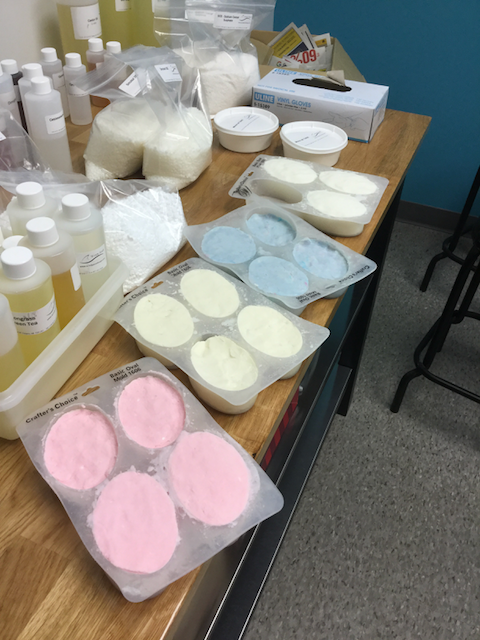There’s a YouTube video I’m seeing referenced quite a bit in the syndet shampoo bar group I mod on Facebook in which someone is saying we shouldn’t use Incroquat BTMS-50 in our shampoo bars, and I’m writing this post to go through what’s being said and share my thoughts.
As a note, so as to not name someone and have that perceived as “bashing” the person as opposed to offering constructive criticism about their words or refuting an argument. You can tell I’m critiquing their words, not the person, because I don’t attack them personally, I’m responding to the ideas they’ve put forth in the video. I’m not linking to the video for these same reasons. I’m referring to the person who made the video as a YouTuber because I found the video on YouTube. If you know the person who made the video or are the person who made the video, I’d love to hear from you so we can continue this discussion further.
What’s being said in the video that I want to address? The YouTuber claims that…
- DIYers use Incroquat BTMS-50 “as a thickening, hardening agent” in shampoo bars;
- Cationic (positively charged) surfactants will build up on your hair if you use them in a shampoo bar, so the conditioner you use after your shampoo won’t work properly;
- Anionic (negatively charged) surfactants can’t remove cationics (positively charged), so they’ll build up on your hair;
- Non-ionics like fatty alcohols, fatty acids, or butters should be used to make your shampoo bar harder.
A quick summary of my arguments in this post:
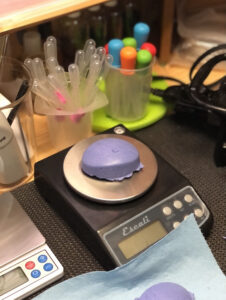 I don’t know why anyone would use Incroquat BTMS-50 as a hardener as it’s an expensive ingredient that we only use in small amounts, like 3% to 5%. It’s in the bar to act as a conditioner to make conditioning shampoo bars, not to make it harder, bouncier, or more resilient.
I don’t know why anyone would use Incroquat BTMS-50 as a hardener as it’s an expensive ingredient that we only use in small amounts, like 3% to 5%. It’s in the bar to act as a conditioner to make conditioning shampoo bars, not to make it harder, bouncier, or more resilient.
They also say that if we have Incroquat BTMS-50 in our shampoo, it’ll condition your hair – meaning the cationic (positively charged) conditioner is attracted to and adsorbs onto the anionic (negatively charged) hair strand – so when you go to use your conditioner after rinsing, it will build up on the hair strand. Yes, cationics adsorb to your hair strand. They can only adsorb to the anionic hair strand, not to layers of other cationic ingredients. If you use too much conditioner and there’s no space for it on your hair strand, it won’t adsorb, just rinsing away easily. The more hydrophobic, the more it resists rinse off, which is what we want in a conditioner. (Incroquat BTMS-50 is hydrophobic, so it stays on your hair for longer than something that’s more hydrophilic or water-loving, like our polyquaterniums.)
Your hair doesn’t care whence the conditioner came – if it’s from a shampoo, conditioner, leave-in, or styling product, it’s all the same to your hair. If you need that conditioning, it’ll adsorb to the hair strand. If you don’t, it rinses away.
Foamy, bubbly, lathery™ surfactants can most definitely remove cationics from our hair when we wash it. If you wash your hair with a proper shampoo, it will remove the conditioner from your hair next time you wash. We aren’t concerned about build up in a single shower; we’re worried about this over time.
Non-ionic fatty alcohols, fatty acids, and butters will make your shampoo bar harder, but they will suppress foam, lather, and bubbles. As well, those of us with oily hair types may find they may weigh our hair down, making it feel greasier or that our hair hasn’t been washed properly. Some will make the bar dragger, which increases friction, which can cause damage. Non-ionic thickeners are a better choice for increasing hardness of our bars when compared to Incroquat BTMS-50, but I prefer to use solid surfactants instead as those don’t weigh down hair and increase bubbles, lather, and foam.
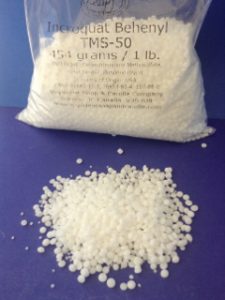 First, why do we use a conditioner like Incroquat BTMS-50 in a shampoo bar?
First, why do we use a conditioner like Incroquat BTMS-50 in a shampoo bar?
Why do we use a cationic or positively charged conditioning ingredient like Incroquat BTMS-50 (INCI: Behentrimonium methosulfate and Cetyl Alcohol) in a shampoo bar? By adding a conditioning ingredient to the formula, we’re making the shampoo bar a conditioning shampoo bar, one that offers light conditioning to our hair during and after washing. It could serve as a 2-in-1 for people who don’t need a lot of conditioning or as a light conditioner to make our hair feel nicer after washing, but before conditioning.
This might not seem important, but if you’ve used a shampoo that leaves you hair feeling like dry, scratchy straw after rinsing, you’ll know how vital a titch of conditioner is in a formula.
I don’t use much – 3% or so – which is not even remotely enough to harden a bar, the first argument the YouTuber makes against using this ingredient. We aren’t using it to harden a bar, we’re using it to add conditioning to our bars, which will make our hair feel much nicer after washing, an incredibly important sensory experience and an incredibly important process to keep our hair healthy.
Another huge reason to use cationics with anionics is that we increase mildness and reduce the potential for irritation by combining our foamy, bubbly, lathery™ surfactants – like these anionic (negatively charged) surfactants, like SCI, SLSa, sodium C14-16 olefin sulfonate, or disodium Laureth Sulfosuccinate – with cationic ingredients, something that’s essential when formulating anything with foamy, bubbly, lathery™ ingredients.
A huge and challenging part of formulating anything with surfactants is to reduce irritation and increase mildness, which is why you see these kinds of combinations in anything I make. You can see it in shampoo bars, liquid shampoos, body washes, and facial cleansers. Adding a cationic to the mix makes everything milder!
Related formulas (just a few of gazillions):
Conditioning shampoo bar for fine hair (formula)
Body wash – PDF, formula from Zoom meeting
Creating an amaranth & honey foaming facial cleanser (part two, formula)
Conditioning shampoo for oily hair (liquid)
Related post: Questions from the recent Zoom workshop on shampoo bars: Adding conditioners to bars
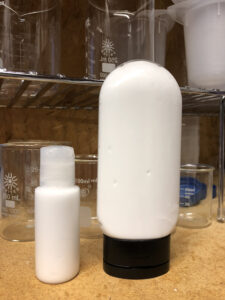 Why do we use conditioners at all? How do they work?
Why do we use conditioners at all? How do they work?
Why do we use conditioners? These are positively charged (cationic) ingredients that adsorb to the strand to help the cuticle lay flatter, which reduces friction damage, reduces combing forces, increases shine, reduces tangles, reduces static and fly-aways, and increases the bouncin’ and behavin’ness of our hair, amongst other properties. They work through a process called substantivity, in which the positively charged conditioner is attracted to our negatively charged (anionic) hair, and it adsorbs to the surface to create a film.
The chemistry: A conditioning agent (like BTMS) is a cationic quaternary compound. It’s a positively charged compound that adsorbs to the surface of your hair. (Adsorption means the molecules accumulate on the surface of your hair. It’s different from absorption in that it doesn’t penetrate, it just sits on top of the hair fibre.) This is called substantivity. This is defined as “an adsorption phenomenon by which materials that have opposing charges or like composition are more readily adsorbed onto or attracted to its surface and, once there, resistant to subsequent rinse-off.” The cationic quaternary compound is hydrophobic – “scared of water” – so it will resist removal by water alone. (The more hydrophobic the quaternary compound, the less likely it is to be removed by water alone.) So the positively charged cationic quaternary compound is attracted to your negatively charged hair fibre and clings on to the surface.
Related posts:
Incroquat BTMS-50 is one of many conditioners we can use in solid and liquid products! You might see others like Crodazoquat MCC, Jeequat® NDCS (aka, ICE Conditioner), Jeesperse® ICE-T CPCS (aka ICE Hair Restore), Jeesperse ICE-T CIS-2 , polyquaternium 7, Quaternized lemon shine, Polyquaternium 4, 10 & 44, STEPANQUAT® Helia, Stepanquat GA-90, or Varisoft EQ 65 – all of these are positively charged (cationic) ingredients that condition our hair to make it feel smoother and to help that cuticle lay flatter with all the good things that offers.
From the YouTube video: “Every time you include those cationics, you’re going to be coating that hair shaft…then the surfactants aren’t able to rinse off and remove that build up, so you’re really conditioning on top of conditioning…”
The argument the YouTuber makes is that if we get conditioning through our shampoo bar, the conditioner we use in our conditioning products afterwards won’t be able to condition because the BTMS-50 will have already conditioned our hair and it’ll cause build up. Our hair doesn’t care where the conditioning comes from, only that the hair is conditioned, and the concept of build up on our hair from using a titch of conditioner in a shampoo bar or liquid shampoo and then using a conditioner isn’t borne out in practice or in any of the resources you might want to consult.
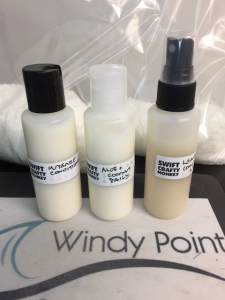 If, after shampooing, our hair needs more conditioning, the conditioning ingredients in that conditioner will adsorb to the places where the conditioner from the shampoo bar didn’t adsorb to offer more conditioning. If our hair doesn’t need more conditioning, it won’t adsorb to the hair strand, and it’ll wash away. You won’t get layer on layer of conditioner on your hair because the positive charge of the conditioner will repel the positive charge or any new conditioner. It’ll only adsorb to those places that are negatively charged (anionic) on your hair strand where there isn’t any conditioner, so you can’t over condition your hair through the process of substantivity.
If, after shampooing, our hair needs more conditioning, the conditioning ingredients in that conditioner will adsorb to the places where the conditioner from the shampoo bar didn’t adsorb to offer more conditioning. If our hair doesn’t need more conditioning, it won’t adsorb to the hair strand, and it’ll wash away. You won’t get layer on layer of conditioner on your hair because the positive charge of the conditioner will repel the positive charge or any new conditioner. It’ll only adsorb to those places that are negatively charged (anionic) on your hair strand where there isn’t any conditioner, so you can’t over condition your hair through the process of substantivity.
That feeling of over-conditioning is often the feeling of having a lot of butters or other non-ionic emollients on your hair, which can build up over time.
Consider this: If you have a coating of something positive on your hair, the positively charged conditioner isn’t attracted to that positive coating charge the way it’s attracted to your negatively charged hair. When two positives meet, they repel each other, so conditioner isn’t building up on conditioner on more conditioner.
There’s always this concern about build up, but if you wash your hair with shampoo, then follow up with a rinse-off and/or leave-in conditioner, when you wash your hair the next time, the shampoo will remove the conditioner. And between washes, the attraction of the conditioner to our hair strand will start to fade, so it’ll come off that way too.
Remember that conditioner’s attraction to our hair is electrostatic, not physical, so if we can break that bond between our negatively charged (anionic) hair strand and the positively charged (cationic) conditioner, it will be removed.
The more hydrophobic the conditioner – meaning the more it hates water and loves oils – the more it’ll resist rinse off. Incroquat BTMS-50 is hydrophobic, meaning it doesn’t like water, so it will resist rinsing off with only water – when you get caught in the rain, when you go swimming, if you give your hair a water-only rinse – which is exactly what we want so our hair looks and feels conditioned for a while after using the conditioner.
Something like polyquaternium 7, which is water soluble, can be rinsed off pretty easily and won’t stand up over more than a few days. This kind of polyquaternium wouldn’t build up over time, with the possible exceptions of the two that make gels, like cationic guar gum or polyquaternium 10.
Try this at home if you don’t think your shampoo is removing the conditioner! Use a clarifying shampoo – one without conditioning of any sort – and observe how your hair feels between washes in the shower and after washing. Does it feel conditioned? Does it feel a bit scratchy or tangled? If the conditioner wasn’t removed from your hair, it would feel conditioned after the first shampoo and second shampoo and you wouldn’t need a conditioner after shampooing. The feeling that your hair isn’t conditioned is a demonstration that shampoo removes conditioners.
Don’t use Incroquat BTMS-50 as a bar hardener!
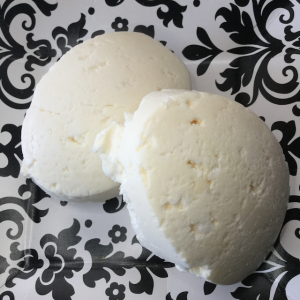 I agree with the YouTuber on this. I only use 3% to 5% Incroquat BTMS-50, which will add a bit to the hardness of the bar, but it’s not the reason I’m using it, which I hope is obvious by this point in the post. Build the hardness of your bar by combining your liquid and solid surfactants, then support that strength with a small percentage of non-ionic emollients, if you want. Incroquat BTMS-50 is too expensive to use as a hardener.
I agree with the YouTuber on this. I only use 3% to 5% Incroquat BTMS-50, which will add a bit to the hardness of the bar, but it’s not the reason I’m using it, which I hope is obvious by this point in the post. Build the hardness of your bar by combining your liquid and solid surfactants, then support that strength with a small percentage of non-ionic emollients, if you want. Incroquat BTMS-50 is too expensive to use as a hardener.
Should we be using solid non-ionic ingredients like stearic acid, Cetyl Alcohol, Cetearyl Alcohol, or butters to make our bars harder?
You can, but these things all interfere with foam, bubbles, and lather, which can be really obvious when you’re making something with a less bubbly surfactant. I use these things in my bars at 3% to 10% so they don’t interfere too much with the lather but still offer some emollience, hardening, and mildness.
They can interfere with washing your hair as well, so I generally save these for the conditioner where they can moisturize and boost conditioning a bit better.
The funny thing is that this is where we need to worry about build up, when we get into using things like butters, fatty acids, fatty alcohol, fatty esters, or other non-ionic emollients that can coat the hair strand. If we aren’t using a foamy, bubbly, lathery™ surfactant to remove those emollients, we can get build up and might notice our hair is looking lank, greasy, or weighed down. This isn’t an electrostatic process the way conditioners coat the hair strand, it’s a physical process where they form a coating on your hair strand, which means it can build up over time if the emollients aren’t removed: More emollients can pile on top of more emollients on your hair strand because they don’t have an electrical charge (non-ionic).
As an aside, as someone with oily hair I can tell you that these ingredients are not my friend, they coat my hair strand, and can build up to make my hair look lank and greasy. On the other hand, something like Incroquat BTMS-50 or Varisoft EQ 65 will offer conditioning that won’t weigh down my hair and don’t add any oils or grease while moisturizing.
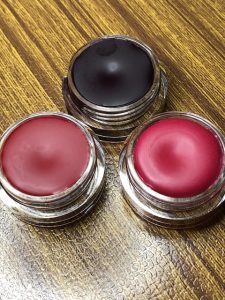 Instead of a non-ionic fatty acid like stearic acid, myristic acid, or lauric acid, I suggest using a non-ionic fatty alcohol. They work with cationic conditioners to boost conditioning, which is why you see Cetyl Alcohol or Cetearyl alcohol coupled with BTMC or BTMS or Varisoft EQ 65 and so on – because they boost the conditioning, increase the emolliency – which increases the lubricity of our hair strands, reducing friction, and reducing damage – and because they add slip and glide, rather than drag. The melting point is substantially lower than stearic acid – 49˚C versus 69˚C – and about the same price, $6-ish for a pound or 454 grams.
Instead of a non-ionic fatty acid like stearic acid, myristic acid, or lauric acid, I suggest using a non-ionic fatty alcohol. They work with cationic conditioners to boost conditioning, which is why you see Cetyl Alcohol or Cetearyl alcohol coupled with BTMC or BTMS or Varisoft EQ 65 and so on – because they boost the conditioning, increase the emolliency – which increases the lubricity of our hair strands, reducing friction, and reducing damage – and because they add slip and glide, rather than drag. The melting point is substantially lower than stearic acid – 49˚C versus 69˚C – and about the same price, $6-ish for a pound or 454 grams.
A non-ionic fatty ester, something like myristyl myristate, behenyl behenate, cetyl palmitate, or cetyl esters – to name a few – would also be a better choice as most have lower melting points with great slip and glide. They’re lighter than fatty alcohols and acids, so they won’t weigh down fine hair as much.
I never ever use stearic acid in a shampoo bar as it adds all kinds of drag, which can cause friction on the hair, which leads to damage. If you’re going to use an emollient, go for a slippery and glidy fatty alcohol or ester, not a fatty acid.
Professional formulas don’t include Incroquat BTMS-50 and, by extension, conditioners.
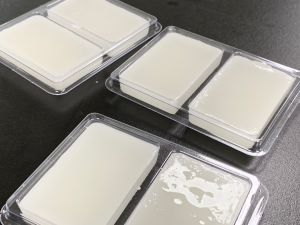 In this video, the YouTuber comments that professional formulas don’t include Incroquat BTMS-50. Professional formulas regularly include conditioners in conditioning shampoo bars for the purposes of conditioning our hair during and after shampooing. They’re also included in body and facial cleansing bars to act as conditioners for our skin, to adsorb and create that electrostatic attraction we call being “conditioned” to make our skin feel softer, smoother, and moisturized.
In this video, the YouTuber comments that professional formulas don’t include Incroquat BTMS-50. Professional formulas regularly include conditioners in conditioning shampoo bars for the purposes of conditioning our hair during and after shampooing. They’re also included in body and facial cleansing bars to act as conditioners for our skin, to adsorb and create that electrostatic attraction we call being “conditioned” to make our skin feel softer, smoother, and moisturized.
The formulas I create are professional and I include a variety of conditioners in them, but don’t just take my word for it, look at all these companies using conditioners in their formulas. I could have shared dozens more, but I think this makes the point for me, and I had to stop at a certain point lest I use all my allotted writing time searching.
Croda, the makers of Incroquat BTMS-50, Incroquat BTMS-25, Crodazoquat MCC, and so on have many formulas for shampoo bars with their conditioners, but it requires a log in to see them, so I haven’t linked them here.
Here are a few that I found in a simple Google search. Manufacturers of our ingredients have finally jumped on this bandwagon. Woo!
The Shampoo Bar (Inolex)
The Cleansing Cube (Inolex)
Raise the bar solid shampoo (BASF)
Handmade shampoo by Colonial Chem (log in may be required):
Zero waste, waterless shampoo bar by Natural Plant Products (log in may be required)
For more information on shampoo and conditioner bars, you can do a search on the blog for “shampoo bar” or “conditioner bar” or you can click these links…
Questions & answers about shampoo bars! (Updated October 23rd, 2020)
Questions & answers about conditioner bars (updated December 28, 2020)
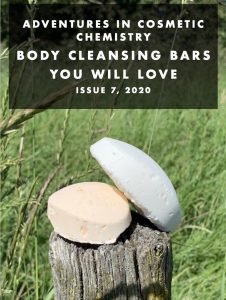 And check out my e-books on creating shampoo bars, conditioner bars, and body cleansing bars for many many formulas on this topic!
And check out my e-books on creating shampoo bars, conditioner bars, and body cleansing bars for many many formulas on this topic!

